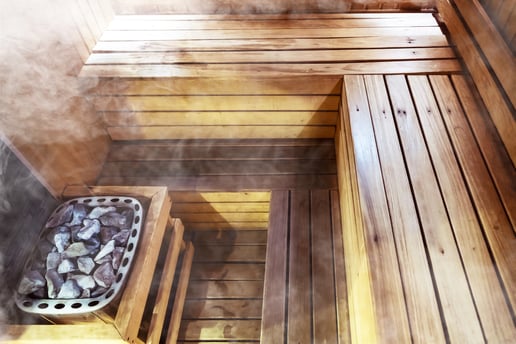Running in the summer can be a pleasantly dangerous experience! As the sun shines and temperatures rise, the risk of heat-related illnesses increases. Listening to your body and adhering to the following recommendations will not only help prevent heat-related illnesses but make summer running an enjoyable experience!
1. Timing and Planning 
The coolest parts of the day tend to be mornings and evenings. If you are planning to run, be proactive and look ahead at the weather forecast. Planning your runs at these times of day will limit the risk of excessive heat exposure. If you must run in the heat of the day, plan a mostly shaded route to limit sun exposure.
2. Find Your Happy Pace
Running in the heat naturally puts more strain on your body leading to increased heart rate. In many cases, runners are unable to sustain their regular paces in hotter conditions. If this occurs, settle into a slower pace that feels comfortable and sustainable to you.
3. Hydration & Electrolytes
Hydration is key in summer running. Increased sweat is associated with increased temperatures. Drinking an adequate amount of water before, during, and after your run is crucial in preventing dehydration. I would recommend drinking at least ½ your body weight in ounces of water to ensure proper hydration. Electrolytes are essential nutrients our body expels in the form of sweat. Consuming an electrolyte drink, banana, or salty snack after a run can help replenish the contents lost in sweat.
4. Listen To Your Body
Knowing and recognizing the signs of heat illness are important when embarking on summer runs. Symptoms of heat exhaustion include dizziness, headache, nausea, and weakness. If these symptoms occur, find the quickest way to cool off immediately. Symptoms of heat stroke include high body temperature, rapid pulse, and confusion. If these symptoms occur, seek medical attention immediately.
With the right approach, running in the summer can be a safe and enjoyable experience! Make sure to check the weather, plan runs during cooler times of day, adjust your pace, and recognize the signs of heat illness to ensure safety during these warmer months. Stay cool, and happy running!


 Summer brings longer days and plenty of sunshine, perfect for outdoor activities and adventures. However, the heat can also lead to dehydration. Here are some essential hydration tips to keep you cool and refreshed all summer long:
Summer brings longer days and plenty of sunshine, perfect for outdoor activities and adventures. However, the heat can also lead to dehydration. Here are some essential hydration tips to keep you cool and refreshed all summer long:.jpg?width=493&height=288&name=GettyImages-1158207879(1).jpg) Fitness center amenities, such as a Sauna or Steam room are amongst the most popular for members of all ages. Members seek these amenities for potential benefits for physical and mental well-being. In this blog, you will learn some potential benefits of using these amenities.
Fitness center amenities, such as a Sauna or Steam room are amongst the most popular for members of all ages. Members seek these amenities for potential benefits for physical and mental well-being. In this blog, you will learn some potential benefits of using these amenities. In
In